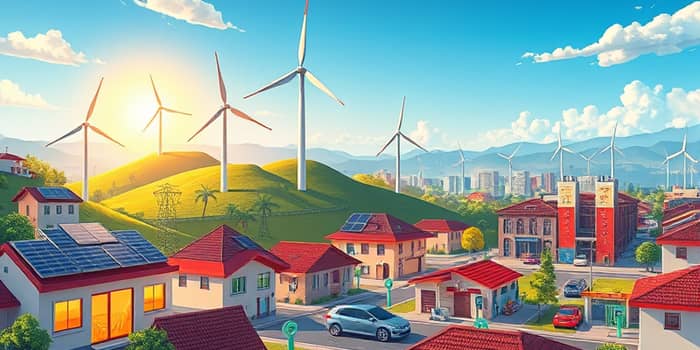
In a world grappling with climate change and shifting economic paradigms, the tides of energy investment are turning decisively toward sustainability. As governments and corporations recalibrate their strategies, the balance between fossil fuels and renewables is evolving rapidly, unlocking new opportunities for innovation, growth, and resilience.
According to the International Energy Agency (IEA), global energy investment will reach $3.3 trillion in 2025, marking a milestone in the industry’s pursuit of sustainability. Of this amount, an impressive clean energy will attract $2.2 trillion—roughly twice as much as fossil fuels, which are set to receive $1.1 trillion. Over the past five years, the share of capital directed toward renewables has grown steadily, powered by ambitious climate targets, post-pandemic economic recovery, and robust industrial policies.
This sustained momentum underscores a profound shift in the global energy landscape. Ten years ago, investments in fossil fuels outpaced electricity; today, electricity investments dominate. Solar PV installations now top all other categories, while wind, energy storage, and grid upgrades capture a growing share of capital. Electrification of transport and buildings has further amplified demand for clean power, creating a virtuous cycle of innovation, cost reductions, and deployment at unprecedented scales.
Historic measures like the U.S. Inflation Reduction Act and Bipartisan Infrastructure Law have catalyzed private and public investment in clean energy. Billions in tax credits, grants, and loan guarantees are accelerating projects across renewables, storage, and electrification. Meanwhile, the CHIPS and Science Act is bolstering domestic manufacturing, reducing reliance on volatile supply chains.
Beyond incentives, the need for national energy security has emerged as a powerful driver. Diversification of energy supplies reduces exposure to geopolitical shocks and price volatility. However, policy reversals pose a looming threat. Scenarios like “Project 2025” risk rolling back incentives, potentially increasing emissions and undermining future job growth in the sector.
Investment is flowing into an expanding array of technologies. Solar and onshore wind lead the charge, while nuclear innovation, grid modernization, and battery storage gain traction. Electric mobility, notably in China, is now cost-competitive with conventional vehicles, spurring massive deployment of EVs and charging infrastructure.
Despite economic swings and geopolitical tensions, ongoing projects face few disruptions. As one IEA report noted, “The fast-evolving economic and trade picture means that some investors are adopting a wait-and-see approach to new energy project approvals, but in most areas we have yet to see significant implications for existing projects.” This resilience speaks to the strategic importance of clean energy assets.
While momentum is strong, challenges remain. Aging grid networks struggle to integrate intermittent renewables, leading to potential bottlenecks. Developing economies also face hurdles in financing and infrastructure, risking uneven global progress.
Addressing these obstacles will require coordinated action across governments, private sector players, and international institutions to ensure resilient and equitable deployment of clean technologies.
Clean energy policies have already created hundreds of thousands of new jobs, with projections pointing to further growth as investments accelerate. From manufacturing solar modules to building charging stations, these roles span the country and offer diverse opportunities. In addition, communities historically reliant on fossil fuels are exploring new pathways through retraining programs and just transition initiatives.
Ensuring a equitable access to new technologies and green jobs is critical. Support for displaced workers, targeted investments in underserved regions, and collaboration with local stakeholders will determine whether the transition uplifts all communities or leaves some behind.
Looking ahead, innovation remains at the heart of the energy transition. Research and development in areas such as advanced photovoltaics, green hydrogen, and carbon capture will reduce costs and enhance scalability. Strengthening ESG criteria and emissions tracking will bolster transparency and accountability among investors and corporations.
With clear net-zero targets and steadfast policy support, the world stands at a pivotal moment. By sustaining ambition and bridging finance gaps, stakeholders can ensure that this wave of investment not only combats climate change but also fosters economic prosperity and energy security for generations to come.
References













